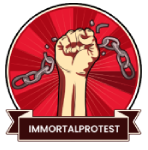Identity conflict within the LGBTQ+ community
Identity conflict refers to the internal struggle that individuals may experience when their personal identity does not align with societal norms, expectations, or pressures. For LGBTQ+ individuals, this conflict can manifest in various ways, particularly concerning their sexual orientation or gender identity. Here are some key aspects of identity conflict within the LGBTQ+ community:
### 1. **Societal Expectations**
Many LGBTQ+ individuals face societal norms that dictate what is considered “acceptable” or “normal” behaviour regarding gender and sexuality. This can lead to feelings of inadequacy or fear when their true identity does not conform to these expectations.
### 2. **Family and Cultural Pressures**
Family acceptance can significantly impact an individual’s sense of self. Those from conservative or traditional backgrounds may feel pressured to hide their identity or conform to heteronormative standards. This can lead to feelings of guilt, shame, and conflict between familial loyalty and personal truth.
### 3. **Fear of Rejection**
Fear of rejection from friends, family, or society can create a significant conflict for LGBTQ+ individuals. The potential for social ostracism or discrimination can lead individuals to suppress their true identity, causing internal turmoil.
### 4. **Internalised Homophobia or Transphobia**
Some individuals may internalise negative societal attitudes toward their sexual orientation or gender identity, leading to self-hatred or a rejection of their true self. This internal conflict can hinder self-acceptance and contribute to mental health issues.
### 5. **Coming Out Process**
The process of coming out can be fraught with conflict. Individuals may struggle with when, how, and to whom to come out, weighing the potential benefits of being open against the risks of discrimination or rejection. This decision can create significant emotional stress.
### 6. **Gender Dysphoria**
For transgender individuals, identity conflict may include experiences of gender dysphoria, where there is a mismatch between their experienced gender and assigned sex at birth. This conflict can lead to profound distress and a desire to transition to align their physical appearance with their gender identity.
### 7. **Intersectionality**
LGBTQ+ individuals may also experience identity conflict due to intersecting identities, such as race, ethnicity, or religion. Navigating multiple layers of identity can complicate their experiences and create additional conflicts between cultural expectations and personal identity.
### 8. **Pressure to Conform**
There can be pressure within LGBTQ+ communities to conform to certain identities or behaviours, leading individuals to feel conflicted about their unique experiences or expressions of identity. This can create a sense of inadequacy or alienation.
### 9. **Mental Health Implications**
Identity conflict can lead to various mental health challenges, including anxiety, depression, and low self-esteem. The struggle for self-acceptance and the fear of societal rejection can create ongoing emotional distress.
### 10. **Path to Resolution**
Overcoming identity conflict often involves a journey of self-discovery and acceptance. Supportive environments, therapy, and connections with affirming communities can help individuals navigate their identity struggles and embrace their authentic selves.
Addressing identity conflict within the LGBTQ+ community requires understanding, support, and advocacy for acceptance and equality. Fostering environments where individuals can express their identities freely can help reduce the psychological impacts of this conflict.






